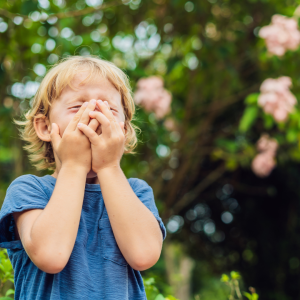Does Your Child Have Springtime Sniffles? Ways to Help

The fresh air and sunshine is intoxicating this spring season, but all the growing things can lead to allergies in children as they rush to play outside in the warmer weather.
Allergies most often begin to appear in children between 2 and 5 years old, said Edward Murphy, MD, an allergist with Memorial Specialty Care at the ENT & Allergy Clinic in Decatur.
Murphy said children may have allergies if they have a constant cough and/or runny nose or if they regularly sound congested. Other common signs parents don’t often recognize – a child who is constantly clearing his or her throat or rubbing his or her eyes. These symptoms can prove detrimental to the child’s sleep routine and also just plain annoying for child and caregiver alike.
If you suspect allergies, it’s important to call your family doctor or pediatrician to schedule an appointment and discuss the symptoms.
“There are specific things we look for in a physical exam that determines if the symptoms are allergies or something else,” Murphy said.
While medications such as oral antihistamines can help, some simple everyday steps can keep your child’s allergies at bay:
- Keep children inside when there are high pollen and mold counts.
- Use a simple nasal saline spray to flush your child’s nose out and remove many of the allergens present in the air.
- For children with indoor allergies, parents can use dust mite covers, follow a frequent schedule of cleaning and vacuuming and wash sheets regularly.
“Uncontrolled seasonal allergies can sometimes lead to secondary infections, such as frequent ear or sinus infections,” Murphy said. “There can also be a connection between allergies, asthma and eczema. Often if allergies are left untreated, it can create issues if there is co-existing asthma or eczema.”

Related Articles
Four Ways to Manage Spring Asthma and Allergy Triggers
Pediatric Allergies: Nothing to Sneeze At